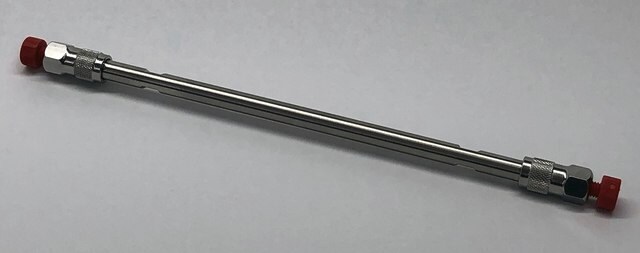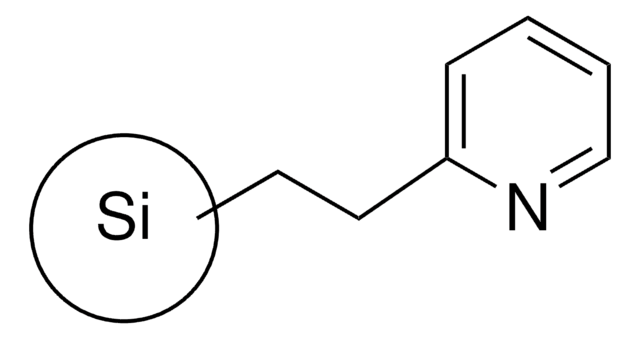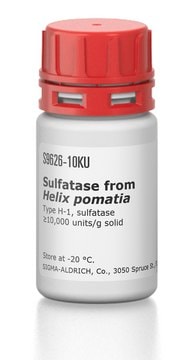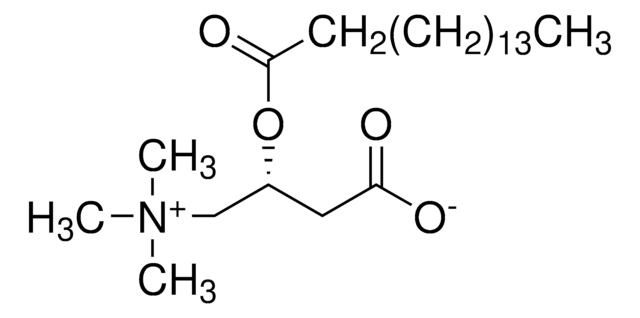54127-U
2-(2-Pyridyl)ethyl Silica Gel
bed wt 100 mg, volume 1 mL, pk of 108
About This Item
Prodotti consigliati
Composizione
bed wt, 100 mg
Confezionamento
pk of 108
tecniche
solid phase extraction (SPE): suitable
Volume
1 mL
Gruppo funzionale matrice
WAX phase
applicazioni
food and beverages
Tecnica di separazione
ion exchange
Descrizione generale
Sample Matrix Compatibility: Organic or aqueous Solutions
- Weak anion exchanger ideal for extracting strong basic compounds that remain charged at all pH levels
- Unlike conventional weak anion exchange SPE phases such as -NH2 (aminopropyl) that have a pKa of 9-10, a pH ≤ 7 is required to protonate or ionize the stationary phase to facilitate analyte retention. Elution is typically done by increasing the pH to 11 resulting in neutralization of the SPE phase.
- 2-(2-pyridyl)-ethyl silica gel has a pKa of ~6. Therefore, analyte elution is feasible at a pH ≥ 7. This characteristic is important for extracting analytes that are not stable (e.g. hydrolyzes) at high pHs typically required for elution when using traditional weak anion exchangers.
- Ideal for extracting acyl-coenzyme A esters from tissue.
- For more information, please see: Minkler, P.E., Kerner, J., Ingalls, S.T., Hoppel, C.L., Novel isolation procedure for short-, medium-, and long-chain acyl-coenzyme A esters from tissue, Analytical Biochemistry 376 (2008) 275–276
Avvertenze
Warning
Indicazioni di pericolo
Consigli di prudenza
Classi di pericolo
Eye Irrit. 2 - Skin Irrit. 2 - STOT SE 3
Organi bersaglio
Respiratory system
Codice della classe di stoccaggio
11 - Combustible Solids
Classe di pericolosità dell'acqua (WGK)
WGK 3
Punto d’infiammabilità (°F)
Not applicable
Punto d’infiammabilità (°C)
Not applicable
Scegli una delle versioni più recenti:
Certificati d'analisi (COA)
Ci dispiace, ma al momento non ci sono COA disponibili online per questo prodotto.
Se ti serve aiuto, non esitare a contattarci Servizio Clienti
Possiedi già questo prodotto?
I documenti relativi ai prodotti acquistati recentemente sono disponibili nell’Archivio dei documenti.
Articoli
SPE retention mechanism in this case is based on the electrostatic attraction of charged functional groups of the analyte(s) to oppositely charged functional groups on the sorbent.
Protocolli
Retention occurs through polar interaction between the sorbent and analytes. Typical sample matrices that can be employed in normal-phase SPE include hydrocarbon or fatty oils diluted in a solvent like hexane, isooctane, chlorinated solvent, THF, diethyl ether, or ethyl acetate.
Il team dei nostri ricercatori vanta grande esperienza in tutte le aree della ricerca quali Life Science, scienza dei materiali, sintesi chimica, cromatografia, discipline analitiche, ecc..
Contatta l'Assistenza Tecnica.









